When we meet someone, one of the first things we observe is the nose. As the nose is in the center of the face, it is a focal point. Thereby if the nose is large or there is something as simple as a nosebleed, it is immediately noticeable. Likewise, nose surgery can result in drastic changes in the appearance of the nose.
Rhinoplasty is the technical name for a nosejob, which is a surgical procedure that reshapes the skin and cartilage of the nose as well as the nasal bones if necessary.
There are several different ways to complete this procedure based on the extent of your concerns with your nose and your surgeon’s assessment. As with any facial cosmetic surgery(facelift, blepharoplasty, neck lift...etc), this is a fully customized experience designed to help you achieve a gorgeous, natural look with highly proportionate facial features.
This procedure is incredibly common in the United States. In fact, there were over 200,000 of these surgeries performed in 2017 alone with a majority of them performed on women. It is also one of the most popular procedures for teenagers although the highest percentage of procedures belongs to those between the ages of 20 and 29.
An ethnic rhinoplasty is a nosejob performed on someone who is not of Caucasian heritage.
Because different ethnicities enjoy different nose shapes, an ethnic rhinoplasty ensures that your healed nose appears completely natural for your background whether you are of Hispanic, Asian, African or Middle Eastern heritage. In order to be considered for this surgery, you must be old enough for your facial bones to be done growing. For girls, this is typically not until the age of 14 while it may not be until the age of 16 for boys.
Some adults may also be good candidates if they have tried injections for a liquid nosejob with limited success. In addition, you should be generally healthy without risky chronic health conditions, and you should not smoke, which could hinder your recovery period and results. You should also have realistic goals of what this surgery can accomplish.
Although the majority of patients seek a nosejob to address cosmetic concerns, such as a big nose, crooked nose or wide nose as well as bumps on the bridge of the nose or bulbous tips, some do choose rhinoplasty for functional concerns. For example, a deviated septum or nostrils that are too narrow may make it difficult to breathe.
This surgery is generally considered to be quite safe. However, you should be aware of the risks and complications that could be present. Some of the most common risks of any surgery include bleeding, bruising, swelling, infection and a reaction to the anesthesia. In general, risks and complications specific to rhinoplasty include the following:
As with any cosmetic surgery, you should begin with a complete consultation with your plastic surgeon. Dr. Nicholas Jones, MD, FACS takes plenty of time with each Atlanta rhinoplasty patient to discuss the steps of the surgery as well as to go over risks in greater detail. He will also perform a physical assessment and go over your past medical and surgical history to ensure that you are a good candidate. You will have plenty of time to ask any questions.
Once this step is complete, you may need to have additional testing prior to your surgery. For example, your surgeon may order certain blood tests, other laboratory work or imaging studies. It is important to go over your medications and supplements with your surgeon to determine whether they are safe to continue taking before surgery.
Before your surgery begins, you will have general anesthesia so that you can rest quietly and comfortably. Once you are asleep, your surgeon will make the appropriate incisions based on the nosejob type you have discussed. He or she will then use specialized techniques to achieve your desired look.
These techniques could include reducing the size of bones and cartilage or using special sutures to shape areas gently. Finally, your plastic surgeon will close the incisions with sutures, and may pack the nose to decrease drainage and help with the healing process in the first few days following surgery. You will be allowed to wake up from your anesthesia and should return home that day.
The two most common types are closed rhinoplasty and open rhinoplasty. The endonasal or closed rhinoplasty can be done with fewer incisions and carries fewer risks of scarring and other complications.
Your surgeon will hide any incisions inside your nose. With an external or open rhinoplasty, the incisions will be more visible because your surgeon will be cutting across the columella, which is the tissue between your two nostrils. You will also have additional incisions in each nostril.
This provides your surgeon with a better view of the cartilage and bones in your nose and is best used in cases that require more adjustments. In some cases, your surgeon may place cartilage grafts to enhance or change the shape of your nose.
Finally, a revision rhinoplasty may be used to correct a previous procedure that did not heal correctly or that did not provide you with the look you wanted. Not only will your surgeon make new incisions to reach the cartilage and bones, but also he may use skin grafts to aid in the healing process.
If you are unhappy with the shape and size of your nose, we encourage you to give our office a call today. A quick consultation may be all that you need to get answers to any questions that you have and to determine if a rhinoplasty could be the right option for you. We can also discuss common costs with you as well as options to help you finance your procedure. By addressing something that has been bothering you for some time, you can improve your self-image and gain confidence for the rest of your life.
Nip & Tuck Plastic Surgery strives to deliver the best rhinoplasty Atlanta has to offer and the cost of your surgery will depend on numerous variables, including the type of nosejob you are having, the extent of the changes needed and any additional plastic surgery procedures that you may be adding on to your surgery. We encourage you to speak to someone in our office about any concerns you may have about the cost of your surgery as well as to find out more about the payment plans we can offer. Keep in mind that a nosejob performed for cosmetic reasons is not covered by insurance but that one done for functional concerns may be covered.
For most individuals, the biggest benefit of this surgery is a newly improved nose shape. Although you may have to wait for several months for the swelling to go down completely before you can see the final outcome, your new nose can help you feel more comfortable in your own skin and can boost your confidence in public. Because your nose is the central part of your face, improving the aesthetics of this feature is vital to creating a proportionate look that is completely natural to your ethnicity.
While you should feel well enough to return to light activities around the house in two days and to return to work in one week, you should know that you will not see the full results of the surgery until several months afterwards. This is because your nose will continue to shift and change shape for up to six months after a closed rhinoplasty and up to a year after an open rhinoplasty.
Initially, you will need to rest quietly at home to protect your new incisions and will need to keep your head elevated to decrease swelling. You will also be given instructions for what medications to take for any pain you have. It is vital that you return to see your plastic surgeon for a follow-up appointment when scheduled so that he or she can evaluate your nose is healing and whether the packing and splints can be removed.
Come visit Dr. Jones and our team and let us help you achieve the spectacular look you deserve!
3280 Howell Mill Rd NW, Suite 200, Atlanta, GA 30327




